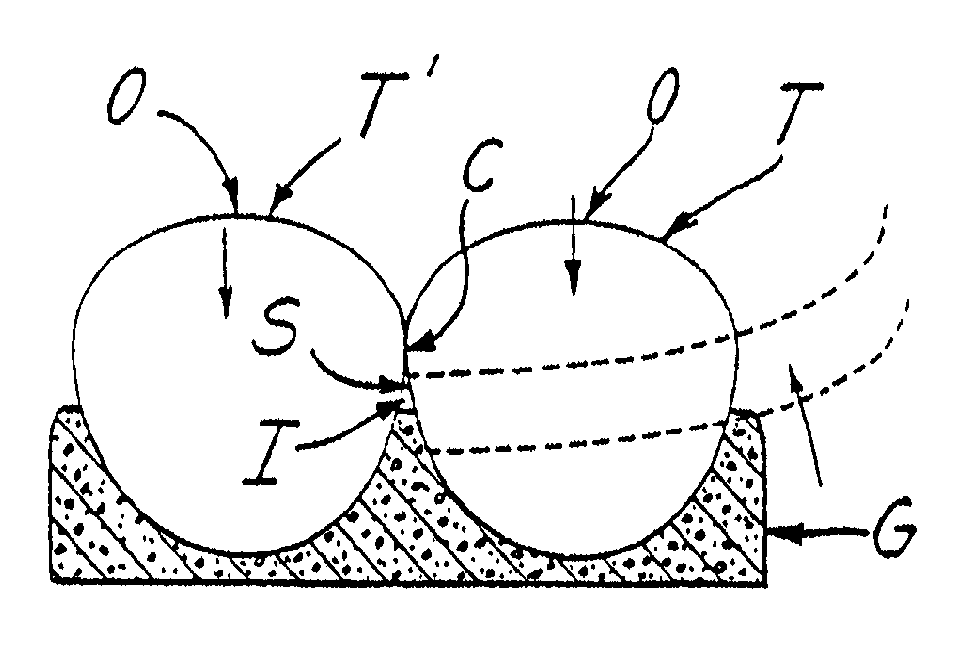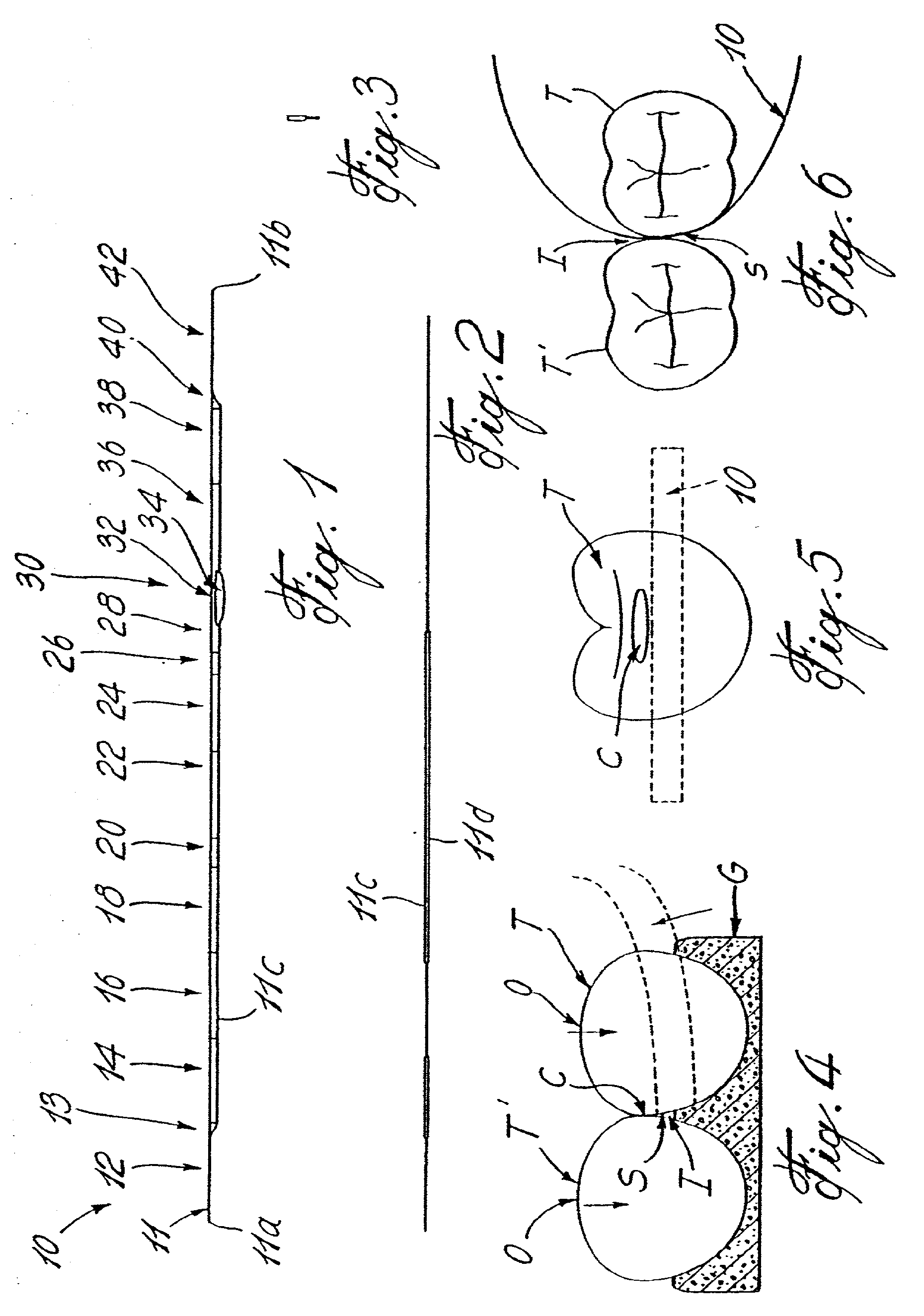Interproximal tooth coating applicator
a technology of interproximal teeth and applicators, which is applied in the field of applications, can solve the problems of inability to apply on interproximal dental surfaces, no durable preservative treatments, and non-durability and expensive treatmen
- Summary
- Abstract
- Description
- Claims
- Application Information
AI Technical Summary
Benefits of technology
Problems solved by technology
Method used
Image
Examples
Embodiment Construction
[0070]Referring to FIGS. 1 to 4, there is illustrated a first embodiment of a tooth coating applicator in accordance with the present invention, which consists of fifteen (15) substrates. The tooth coating applicator is identified with reference numeral 10 and is used for applying a coating, such as a dental sealant, to an interproximal surface S of a tooth such as by inserting the coating applicator 10 between a pair of adjacent teeth T and T′, that is through an interproximal space I defined therebetween.
[0071]The tooth coating applicator 10 comprises an elongated strip 11 which allows access to the interproximal space I and to the interproximal dental surface S and isolates the interproximal area during the process, as will be described in details hereinafter. This permits for the sealing agent to retain its integrity and to be adequately applied to the dental surface S. The strip 11 has a first end 11a and an opposed second end 11b, a front side 11c and an opposed rear side 11d....
PUM
 Login to View More
Login to View More Abstract
Description
Claims
Application Information
 Login to View More
Login to View More - R&D
- Intellectual Property
- Life Sciences
- Materials
- Tech Scout
- Unparalleled Data Quality
- Higher Quality Content
- 60% Fewer Hallucinations
Browse by: Latest US Patents, China's latest patents, Technical Efficacy Thesaurus, Application Domain, Technology Topic, Popular Technical Reports.
© 2025 PatSnap. All rights reserved.Legal|Privacy policy|Modern Slavery Act Transparency Statement|Sitemap|About US| Contact US: help@patsnap.com


